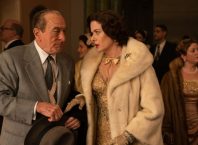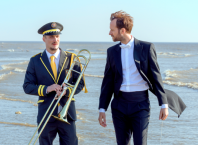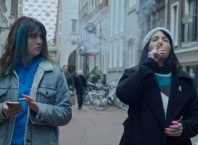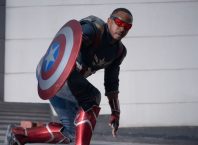
A twenty-four hour video-art work made up of countless clips of film and television footage is bound to arouse curiosity. The fact that the very same video work won this years Golden Lion award at the Venice Art Biennale and has had people queuing up at major galleries in London and New York means that the work comes with some hype and no little expectation.
The work in question, Christian Marclay’s The Clock, has just opened at the Israel Museum. An audio-visual montage constructed around the theme of Time, the film also keeps real time – meaning that whatever time it happens to be in the film that is also the exact time in real life. An intriguing gimmick or a rewarding metaphysical experience? Possibly the answer lies somewhere in-between.
The Israel Museum’s head curator, Suzanne Landau, first saw the work at London’s Frieze Art Fair. Having established a relationship with the artist early in his career, acquiring an early work in 1992, Landau and the museum will be showing The Clock for a longer duration of time than has been possible in galleries in New York and London.
Marclay is a Swiss-American artist who has experimented with sound for the greater part of his career. He was one of the first people to engage in the mixing together of phonograph records. This process involved the cutting-up and splicing together of records and their resulting sounds. Being that The Clock is a video collage with thousands of film and sound clips, it seems more than likely that these methods fed into the concept and production of The Clock. Marclay even pays homage to the phonograph and its counterpart, the vinyl record, during the course of this work, using footage of a gramophone needle landing on the record as a sort of splicer between scenes.
The film is a mammoth and fascinating construction, and one that took four years to complete. Considering the amount of editing and painstaking selection involved in the process one can only admire Marclay’s commitment. Doubtless he derived moments of pleasure and play; after all, he could pick some of his choice film moments, presuming they fit the concept, intersect and juxtapose them at will in what would be his Time meisterwerk.
I saw approximately three hours of the work, three out of a possible twenty-four. In a sense this posed more questions than answers. I imagine that the footage would change in all sorts of ways depending on the time of day or night. There would be variations in theme, tone and mood all contributing to our perception of Time as a concept in the film. My viewing began at approximately eleven in the morning and finished at about three in the afternoon.
As expected Father Time is everywhere in the work, but rarely does it exert a calming or meditative influence. This is 21st Century time – quick, throbbing and pulsating. The backdrop of clock-faces, time-pieces, trains and stations show us the hustle and bustle of city life and people on the move. The characters and scenes constantly refer to the time and coupled with shots of the camera panning to clock-faces, at times create a kind of melodramatic B-movie effect. Marclay gives more than one nod in the direction of Modernism, by acknowledging the Age of the Machine in the form of the inner workings of the clock, occasionally the camera will shift focus to the wheels and cogs that keep our time-machines ticking along, modulating and regulating our daily lives.
Scenes run into each other in a virtually seamless fashion. We meet a cast of familiar and unfamiliar actors and characters and this is part of what propels the film along and holds our interest. Time is measured in various ways, in Raging Bull by the cooking of a steak, and we get to hear Robert De Niro’s character Jake La Motta utter those infamous lines, “Don’t overcook it, if you overcook it its no good, it defeats its own purpose”. A short time later Charles Laughton’s character Kwasimodo tolls the hour in a church belfry in The Hunchback of Notre Dame. This scene is juxtaposed with a clip of Klaus Kinski in Fitzcaraldo, also in a belfry tower, decrying his obsessive desire for an opera house to the town inhabitants.
The film is something of an enigma; scene after scene, hour after hour of loosely connected footage with no narrative, and yet we are pulled in, in the same way that we view a movie, following a timeline and wondering what is coming next. Although there is an escapist element to The Clock, expressed in ‘reel time’, we never quite lose ourselves – Time and the clock are ever present, as in the course of a regular day. We are in the film, but we are also in real time.
The Clock has all the ingredients for achieving cult status – given its unique format, and that it does not fall comfortably into any category. Galleries are now arranging for the film to be shown on the night-shift in small art-house cinemas and the work could become something of a “happening”. How will we view the work in years to come… dare I say only time will tell.
Christian Marclay’s The Clock will be on view at the Israel Museum through October 22, 2011.
24 hour screenings will take place: September 13 at 16:00 through September 14 at 16:00; October 18 at 10:00 through October 19 at 10:00. During regular museum opening hours, regular admission charges will apply. After hours, when the rest of the museum is closed (Tuesday after 21:00 through Wednesday at 10:00) admission will be FREE!






Nice review – thanks. Unfortuntely I missed it on my brief visit to the Israel Museum yesterday but I will certainly look out for it elsewhere.
Comments are closed.